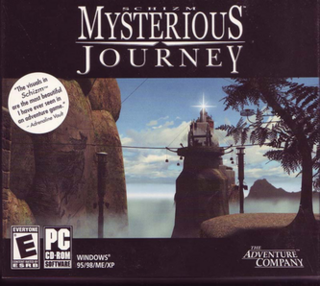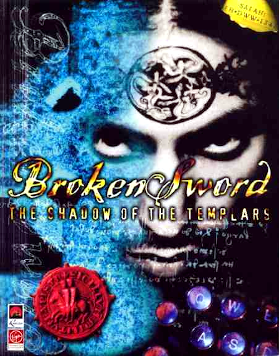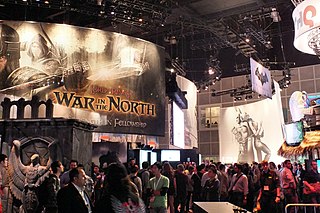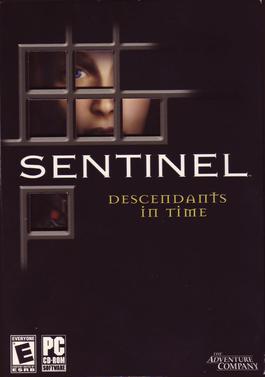
Lucasfilm Games is an American video game licensor that is part of Lucasfilm. It was founded in May 1982 by George Lucas as a video game development group alongside his film company; as part of a larger 1990 reorganization of the Lucasfilm divisions, the video game development division was grouped and rebranded as part of LucasArts. LucasArts became known for its line of adventure games based on its SCUMM engine in the 1990s, including Maniac Mansion, the Monkey Island series, and several Indiana Jones titles. A number of influential game developers were alumni of LucasArts from this period, including Brian Moriarty, Tim Schafer, Ron Gilbert, and Dave Grossman. Later, as Lucasfilm regained control over its licensing over the Star Wars franchise, LucasArts produced numerous action-based Star Wars titles in the late 1990s and early 2000s, while dropping adventure game development due to waning interest in the genre.

Grim Fandango is a 1998 adventure game directed by Tim Schafer and developed and published by LucasArts for Microsoft Windows. It is the first adventure game by LucasArts to use 3D computer graphics overlaid on pre-rendered static backgrounds. As with other LucasArts adventure games, the player must converse with characters and examine, collect, and use objects to solve puzzles.

Escape from Monkey Island is an adventure game developed and released by LucasArts in 2000. It is the fourth game in the Monkey Island series, and the sequel to the 1997 videogame The Curse of Monkey Island. It is the first game in the series to use 3D graphics and the second game to use the GrimE engine, which was upgraded from its first use in Grim Fandango.

Myst III: Exile is the third title in the Myst series of graphic adventure puzzle video games. While the preceding games in the series, Myst and Riven, were produced by Cyan Worlds and published by Brøderbund, Exile was developed by Presto Studios and published by Ubi Soft. The game was released on four compact discs for both Mac OS and Microsoft Windows on May 8, 2001; versions for the Xbox and PlayStation 2 were released in late 2002. A single-disc DVD version was later released for Windows and Mac OS.

Pyst is an adventure computer game released in October 1996. It was created as a parody of the highly successful adventure game Myst. Pyst was written by Peter Bergman, a co-founder of the Firesign Theatre, and was published by Parroty Interactive, with Bergman, Stallone, Inc. as co-publisher. Mindscape began distributing the game on August 20, 1997. The parody features full motion video of actor John Goodman as "King Mattruss", the ruler of "Pyst Island". Versions of the game were produced for both the Windows PC and Apple Macintosh operating systems.

Schizm: Mysterious Journey is an adventure-genre computer game created by Detalion and LK Avalon and published by DreamCatcher Games. It was authored by acclaimed Australian science fiction writer Terry Dowling. Within a year of release, its sales had surpassed 250,000 units worldwide.

Syberia is a graphic adventure game, developed and published by Microïds, and released for Microsoft Windows, PlayStation 2, and Xbox on 9 January 2002, with the game later ported for Windows Mobile, Nintendo DS, Android, OS X, PlayStation 3, Xbox 360, iOS, and Nintendo Switch in later years. Created and designed by Belgian artist Benoît Sokal, Syberia is set in the same world as Sokal's 1999 video game Amerzone. It follows Kate Walker, an American lawyer tasked with overseeing the major sale of a company and her subsequent journey across Europe and Russia to find the brother of the recently deceased owner. Alongside the main plot, the story also consists of a subplot involving Kate's personal life.
FromSoftware, Inc. is a Japanese video game development and publishing company based in Tokyo. Founded by Naotoshi Zin in November 1986, the company developed business software before releasing their first video game, King's Field, for the PlayStation in 1994. Its success shifted FromSoftware to focus fully on video games, with them producing two more King's Field games before creating the mecha combat series Armored Core (1997), one of their flagship franchises.
Detalion S.C, was a Polish video game developer founded by a partnership of six people, that first met in the early 1990s, working from game developer and publisher LK Avalon.

Sanitarium is a psychological horror point-and-click adventure video game that was originally released for Microsoft Windows. It was developed by DreamForge Intertainment and published by ASC Games in 1998. It was a commercial success, with sales around 300,000 units. In 2015, it was ported to iOS and Android devices.

Broken Sword: The Shadow of the Templars is a 1996 point-and-click adventure game, and the first in the Broken Sword series, co-written and directed by Charles Cecil, and developed by Revolution Software. The player assumes the role of George Stobbart, an American tourist in Paris, as he attempts to unravel a deep conspiracy involving a sinister cult and a hidden treasure, seeing him travel to various locations around Europe and the Middle East. The game's storyline was conceived to feature a serious tone and heavily influenced by research on Knights Templar by Cecil, but was also interlaced with humor and graphics in the style of classic animated films.

Adventure Gamers is a computer game website created by Marek Bronstring in March 1998 dedicated to the genre of adventure games. It publishes reviews and previews of adventure games, as well as opinion articles and interviews with game designers.

Numerous computer and video games have been inspired by J. R. R. Tolkien's works set in Middle-earth. Titles have been produced by studios such as Electronic Arts, Vivendi Games, Melbourne House, and Warner Bros. Interactive Entertainment.

Return to Mysterious Island is a 2004 graphic adventure game developed by Kheops Studio and published by The Adventure Company. Based on Jules Verne's 1875 novel The Mysterious Island, the game casts the player as Mina, a shipwrecked woman forced to survive on an uncharted island.

Atlantis II, known as Beyond Atlantis in North America, is a 1999 graphic adventure game developed and published by Cryo Interactive. The sequel to Atlantis: The Lost Tales, it follows the story of Ten, a mystical being that travels across time to defeat the Bearer of Dark. Players assume the role of Ten and solve puzzles in locations such as Ireland, the Yucatán Peninsula of Mexico and China.

Atlantis III: The New World,, is a 2001 fantasy adventure video game developed and published by Cryo Interactive, with Dreamcatcher Interactive publishing the game in North America. David Rhodes composed the musical score. It is the third game in the Atlantis series by Cryo, as well as the last one made before Cryo's closure. It was followed by Atlantis Evolution in 2004.

Pro Pinball: Fantastic Journey is an action video game developed by Cunning Developments, published by Empire Interactive and distributed by Take-Two Interactive for Microsoft Windows and PlayStation. It is the fourth game in the Pro Pinball series. Elements of the game include combinations of Victorian era settings, steam powered machinery, steampunk style nautical adventures, and fictional islands.

Sentinel: Descendants in Time is a "puzzle-adventure, Myst-clone" video game released in 2004.

Reah: Face the Unknown, known in North America as simply Reah, is a 1998 first-person puzzle-oriented adventure game with a non-linear plot, described as a Myst-clone. It was developed by Project Two Interactive / Black Friar and published by Detalion and LK Avalon. It was distributed by Erbe in Spain on October 10, 1998. It was published by Project 2 Interactive in the Netherlands, and distributed in the U.S. and Canada by GT Interactive in 1999.

















